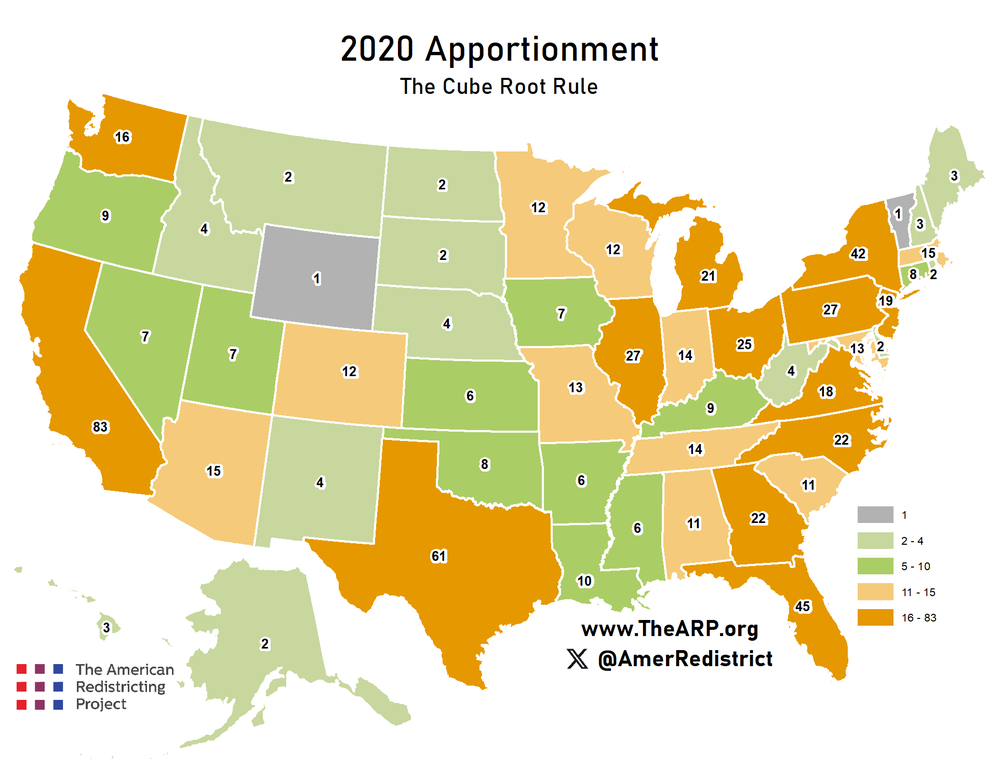Background
As we introduced in Uncapping the House - Pt. 1 - The Wyoming Rule, many advocates for redistricting reform have looked to increasing the number of Representatives elected to the House of Representatives. Another often-cited method of setting the size of the House is the Cube Root Rule, a straightforward concept where the size of the House of Representatives should be equal to the cube root of the total resident population.
The Cube Root Rule
In 2020, the Census Bureau found the total resident population of the United States stood at 331,449,281. The cube root of the population (∛331,449,281) would result in 692.05 seats, an increase of +257 over the current size. We will round down to 692 seats. The apportionment of those seats is illustrated below.
*A previous version of this post showed an apportionment using numbers forecast forward to 2030. That apportionment will be featured in a future post.
The 2020 Apportionment Using the Cube Root Rule

141 of the 257 new seats would go to the ten largest states:
California: 52 -> 83 (+31)
Texas: 38 -> 61 (+23)
Florida: 28 -> 45 (+17)
New York: 26 -> 42 (+16)
Pennsylvania: 17 -> 27 (+10)
Illinois: 17 -> 27 (+10)
Ohio: 15 -> 25 (+10)
Georgia: 14 -> 22 (+8)
North Carolina: 14 -> 22 (+8)
Michigan: 13 -> 21 (+8)
Rhode Island and Montana would still have only two seats in the House of Representatives
The Cube Root Rule vs. The Wyoming Rule
The Cube Root method would yield an additional +119 seats over the Wyoming Rule. Since the apportionment is still being calculated using the Method of Equal Proportions the states still have a similar share of the seats in Congress. The further expansion of the House via the Cube Root rule vs the Wyoming Rule leads to two fewer At-Large states. Both North Dakota and Alaska would receive a second seat while Wyoming and Vermont would still be At-Large.

Electoral College Impact
A post-2020 apportionment using the Cube Root Rule would have only minor impacts on the Electoral College.
Under the current apportionment, President Trump carried 31 states and with them 312 Electoral College Votes (57.993% of the Electoral College). Kamala Harris won 19 states and the District of Columbia for 226 ECVs (42.007%).
President Trump would have won 462 Electoral College Votes (58.11%) with the size of the House set by the Cube Root Rule to Kamala Harris' 333 (41.89%).
